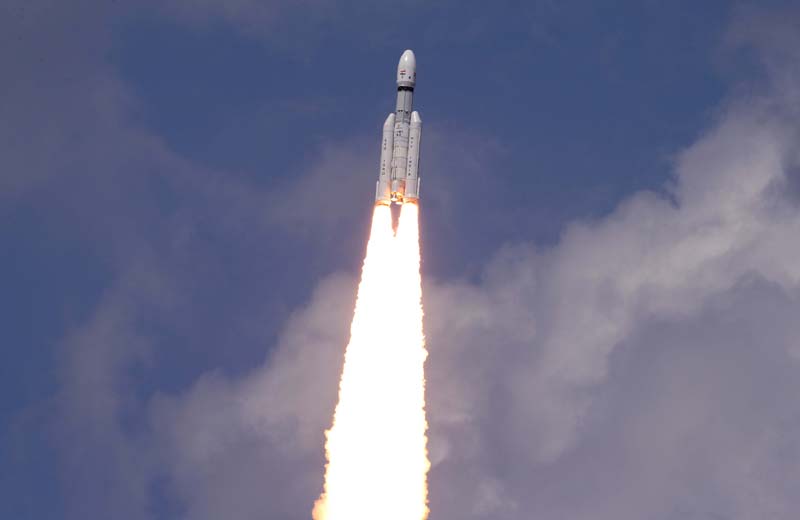India has successfully launched its third moon mission, Chandrayaan-3, and aims to land a robotic lunar rover on the moon’s south pole. The rocket injected the spacecraft into a precise orbit around Earth, demonstrating the reliability and capability of ISRO’s heavy-lift vehicle, LVM3, nicknamed Bahubali. Chandrayaan-3 aims to explore an area that has not been extensively studied before. By reaching the south pole, the mission sought to investigate the geophysical, chemical, and thermal characteristics of the region. The mission is aimed at developing and demonstrating new technologies required for future interplanetary missions. The mission includes an indigenous propulsion module, a lander module, and a rover, which carry various payloads to conduct scientific experiments on the moon’s surface.
The inclusion of NASA’s Laser Retroreflector Array(LRA) in the Chandrayaan-3 mission is indeed significant. This collaboration between ISRO and NASA enhances the scientific capabilities of the mission and contributes to our understanding of the lunar environment and holds much broader significance. The collaboration symbolises the growing bonhomie and cooperation between India and the United States in the field of space exploration. Both countries stand to benefit immensely from sharing resources, expertise, and data, leading to advancements in space science and technology. Moreover, India’s participation in the Artemis Accords further reinforces its commitment to international space cooperation. By signing the Accords, India joins a group of nations dedicated to promoting peaceful exploration and utilisation of space, particularly on the Moon and Mars.
ISRO has several advantages over other space players, and its cost-effectiveness has been a significant factor in its success. The availability of talent at lower costs in India has helped reduce operating costs for ISRO, making it more financially efficient compared to some other space agencies. ISRO has successfully launched numerous space missions at a fraction of the cost of a Hollywood movie, which highlights its ability to achieve significant milestones within constrained budgets. In recent years, the Indian Government has increased the budget allocated to ISRO, recognising its potential and the importance of space exploration and technology development. ISRO has also generated substantial revenue through its commercial arm by launching missions for private and international agencies. This revenue generation demonstrates ISRO’s ability to leverage its capabilities and infrastructure for commercial purposes, further enhancing its financial stability.
There will be significant growth in the market for space launches in the coming years. The availability of cost-effective launch services, increasing demand for navigation and communication satellites, and the participation of start-ups and SMEs in the space sector will drive innovation and create new revenue opportunities. To facilitate the involvement of private players, the Indian Government has established the Indian National Space Promotion and Authorization Centre (IN-SPACe). The presence of private players will enhance India’s competitiveness in the global space industry, opening up new avenues for collaboration and technological advancements.
India’s focus on self-reliance in the space sector is also significant, as by developing indigenous capabilities, India reduces its dependence on foreign technology and strengthens its autonomy in space missions with major economic benefits. Furthermore, advancements in space technology not only benefit space missions but also have broader applications in various sectors. Remote sensing, satellite communication, and navigation systems have immense potential for socioeconomic development, agriculture, disaster management, climate studies, and urban planning. By leveraging these technologies, India can address societal challenges, drive innovation, and foster economic growth.
Overall, the combination of India’s technological advancements, its focus on self-reliance, and the potential of space technology to address security concerns and drive socioeconomic development lay a solid foundation for India to emerge as a leading force in space launches. Continued investment, research, and collaboration with the private sector and international partners will further strengthen India’s position in the global space industry and pave the way for new achievements and discoveries in space exploration and beyond.
Trending Now
E-Paper


